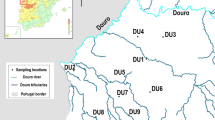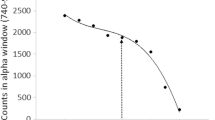Summary
It is well known that the interest in radon concentration indoor as a pollutant emerged during the energy crisis of seventies which led to reduce ventilation in dwellings. Recently the Euratom Recommendation 2001/928 suggested the necessity of performing frequent 222Rn checks on tap waters. As a consequence of this Recommendation, Urbino and Perugia Universities carried out a preliminary 222Rn determination on tap waters of the Pesaro-Urbino province. Samplings were carried out in twenty-eight sites and radon concentration was determined by liquid scintillation counting and gamma-spectrometry. The results obtained by the two techniques were comparable (the deviation from the mean is lower than 10% for 54.5% of the samples). The resulted 222Rn concentration was very low (5 Bq . l-1 for 43% of the samples) and, therefore, radon in waters cannot be considered as a direct radiological risk for the local population.
Similar content being viewed by others
Author information
Authors and Affiliations
Rights and permissions
About this article
Cite this article
Desideri, D., Roselli, C., Rongoni, A. et al. 222Rn determination in drinkable waters of a central eastern Italian area: Comparison between liquid scintillation and gamma-spectrometry. J Radioanal Nucl Chem 266, 191–197 (2005). https://doi.org/10.1007/s10967-005-0891-6
Issue Date:
DOI: https://doi.org/10.1007/s10967-005-0891-6




